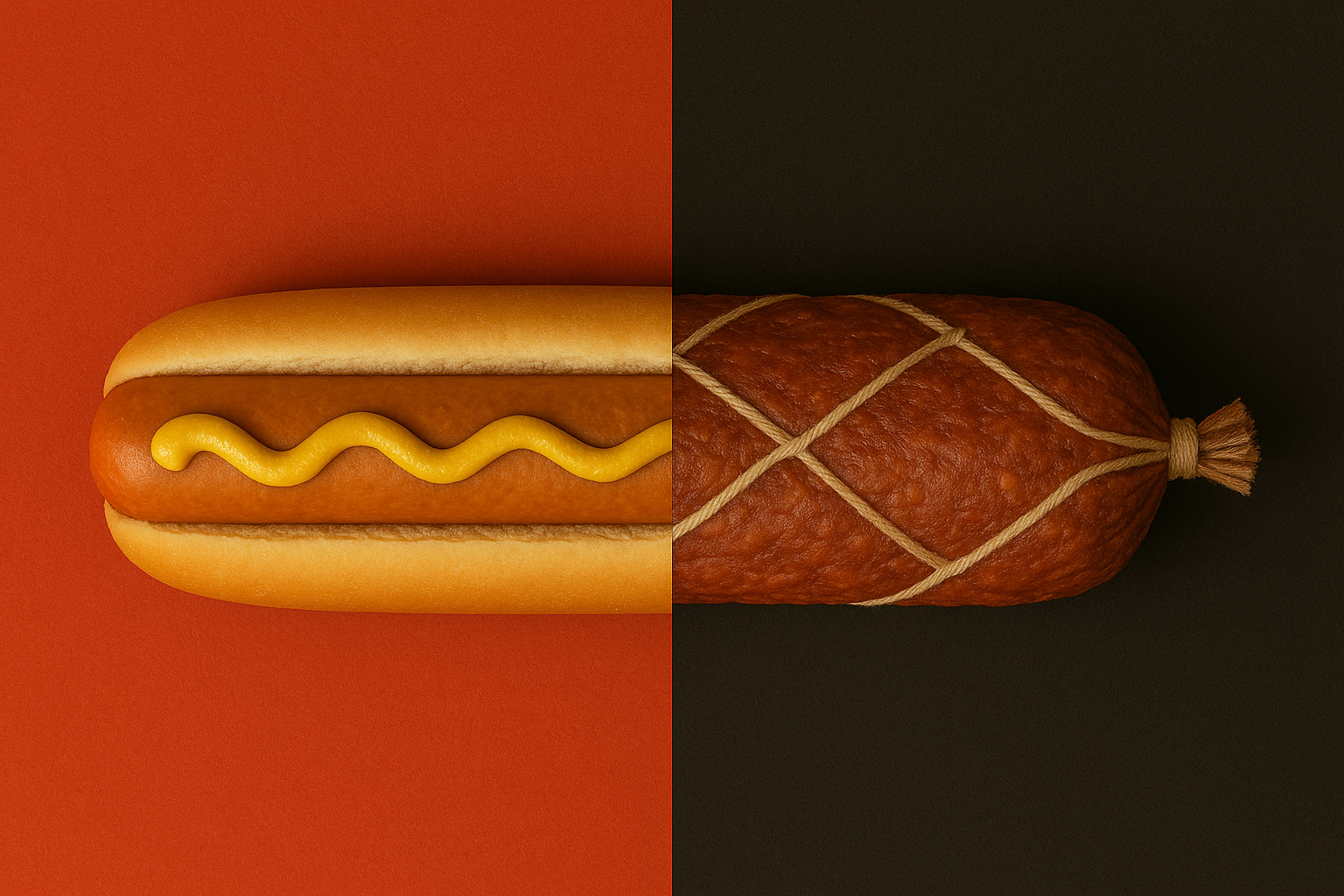Fast branding gets noticed. Slow branding gets remembered
Fast branding vs slow branding. The difference isn’t in pace, it’s in purpose.
Some brands are built for the moment. Others are built to mean something.
Both have their place—but only one stands the test of time.
There are really only two ways to build a brand: for the short term or the long term.
The short-term approach is reactive and aesthetic-led.
It thrives on momentum—chasing what’s trending, what’s influential, what keeps you visible.
It’s performative design: made to look incredible and convincing.
It feels exciting because it delivers instant validation.
It’s measurable.
It’s shareable.
And, to be fair, it makes perfect sense in certain spaces—especially in the creator and influencer economy, where attention and timing are everything.
Fast branding fits that rhythm.
It’s built for immediacy.
But how long can it sustain?
Then there’s the long-term approach.
It’s slower. Strategic. Deeply considered.
It builds systems, not just surfaces.
It’s less about how a brand looks today and more about how it behaves tomorrow.
Long-term branding doesn’t chase attention—it earns trust.
It asks harder questions, creates clarity, and gives a business something far more powerful than a style: a spine.
It’s built on relationships, not transactions—where client and creative grow together, shaping something that lasts.
The challenge today is that a new wave of agencies and clients has built its identity around fast branding.
They’ve perfected the art of visibility—branding for the now, not longevity.
And in doing so, they’ve shaped what the industry now calls “standard.”
Agencies chase relevance.
Marketers chase recognition.
Each validates the other—an echo chamber rewarding style over substance.
So when these same teams finally land a project that calls for deeper, more purposeful brand building, they often fall short.
Not from lack of talent, but lack of practice—and the ability to sustain the relationship and build the brand over the long term.
They’ve been optimising for trends and style, not practising solving unique problems.
The result?
A steady stream of beautiful work that wins attention but rarely earns traction.
And over time, that becomes the model—the assumption that branding is something to constantly refresh, redesign, and repackage.
It’s not wrong—just incomplete.
Because branding can be a short-term expression or a long-term evolution.
Both have their place.
The trick is knowing which game you’re playing—and why.
Fast branding feeds relevance.
Slow branding builds resilience.
The best brands find a rhythm between the two.
At Cul-de-sac, we know both rhythms well.
We understand the responsiveness and agility of fast branding, and the trust and endurance of slow branding.
We know when to move with speed and when to move with depth—because the difference isn’t in pace, it’s in purpose.
Marco Cicchianni, November 2025
